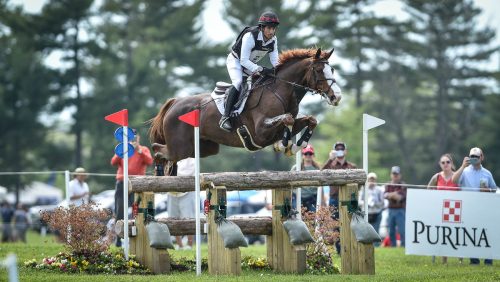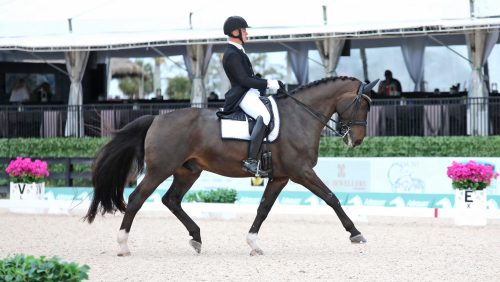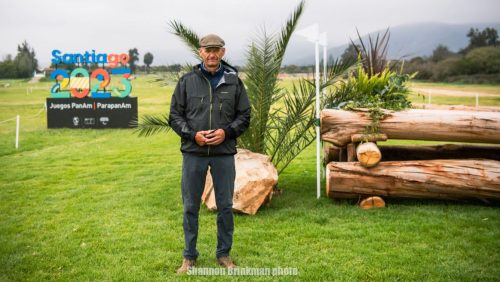On Day 2 of his clinic, Olympic team gold medalist McLain Ward told the riders assembled at Five Henry Stables, in Aiken S.C., that he is a big believer in sports psychology and attributes his growing success to his ability to manage his thoughts and emotions.
You can read all about Day 1 of the McLain Ward clinic at Five Henry Stables in “Our Training Is Not Some Wizardry.”
“I am a rider who for my entire life has battled nerves and anxiety, and over-trying,” Ward shared. “So I have worked with a sports psychologist. One of the major things to do is stay in the present. But we also need to adopt a concept called sports amnesia.”
He explained that in competitive sports, athletes must learn to immediately forget a mistake so that it doesn’t affect their future performance.
“In show jumping, if you got deeper than you would have liked [and drop a rail], instead of thinking about it and making another mistake, put it behind you,” he explained. “You cannot combat the mistake by making another one. Stay focused in the present and make the round the best you can be.”
“Four faults is a lot better to live with, because maybe you end up fifth, than crashing through the last combination because you are busy kicking yourself in the butt,” he added.
The Small Things Matter
On the second day of his show jumping clinic, Ward worked with a group of 25 riders of various levels on the flat and over a small course of jumps. As he shared his thinking on everything from curb chains to lead changes to the contents of his “ring bag,” one thing became clear: Ward is a perfectionist in everything he does.
“There is not a detail that I think is too insignificant to be aware of,” Ward explained. “In our organization we try to have discipline and attention to detail in everything we do. Being aware of all these little details gives me an advantage. And if I get a little edge everywhere more often than not I am going to be ahead.”
As an example, he walked the group through his routine at competitions. He spends about eight minutes on the flat, where he asks the horse to “be responsive and respectful.” He then jumps a few verticals, looking for consistent distances where “my horse can just kind of fall over them.” Then he jumps six to eight oxers, and dismounts his horse.
“We reset my saddle, I walk away and think about my course, take a little time for myself,” Ward explained. “When I get back on, we jump two verticals. The second one is a hole or two higher, big enough to get his attention. This is where I might consider having the pole pushed in a bit to create a bit of a rub. Then I go in the ring.”
“There is a plan, and this is planned down to the seconds,” Ward added. “But it’s my routine. You have to develop your own routine, one that works for you.”
Address The Little Disciplines
As each group worked their horses, Ward encouraged them to correct what might appear to be insignificant errors in their flatwork or early jumping. He worked closely with Jane Garvey. She was struggling with her mount Con Fire, who had decided that horse-eating monsters lived in one corner of the ring.
ADVERTISEMENT
Ward insisted that she address the issue. “We talk about steady consistent discipline. Correct it once, boom, done. You don’t have a problem. You let him get away with it; you’ve opened Pandora’s Box. Then he is going to do it again, and you have a problem,” he explained. “Never reprimand a horse for no reason. But you have to be steady and disciplined and correct about having them mind their manners.”
Later in the day, Ward helped Christina Couper with her mare Cora, who had found her own set of monsters. “First thing people do, they pull the horse’s head into the thing the horse is spooking at. They forget about the body,” Ward said as Cora peeked at a red brick box. “You should turn the head away and use your lower leg to push the body [toward the box], take the horse’s attention off of what she is spooking at.
“When I feel her starting to spook, I sit down and push her body over and into it, then once she is good I lighten my seat again.”
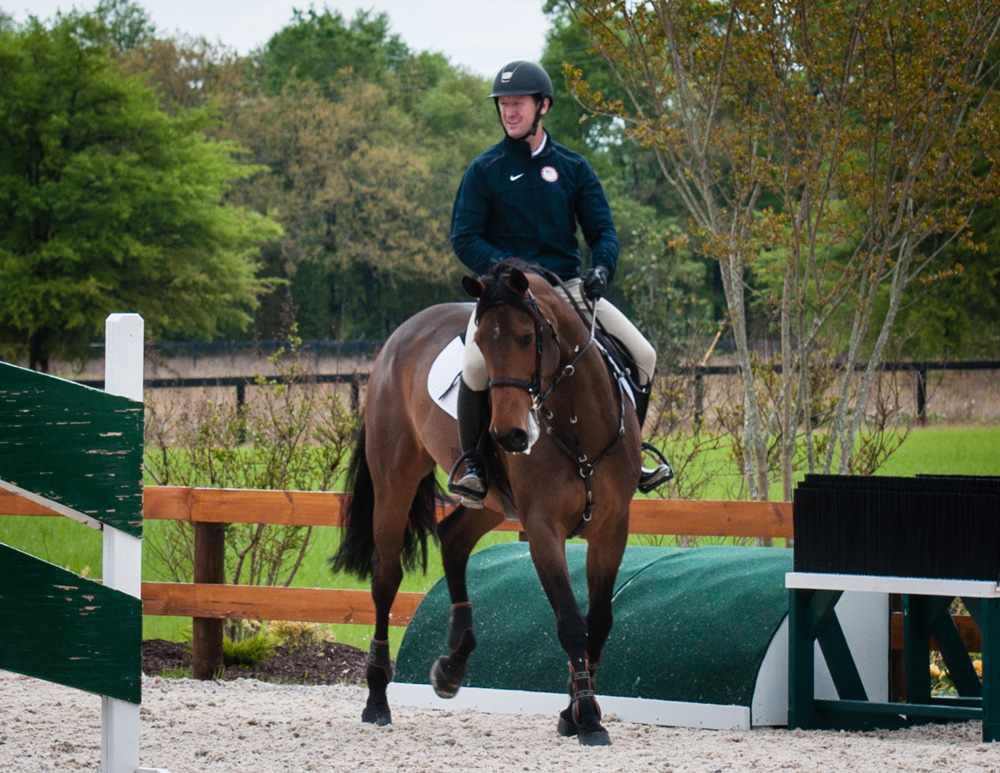
McLain Ward rode Christina Couper’s Cora to demonstrate how to push the horse’s body into a spooky area. Photo by M Timmerman Photography
Ward spoke to the group about the right rhythms of discipline, and finding places to ease up on the horse.
“Let the horse think it is not always your thumb on them. Horses can only take so much pressure—they have shorter attention spans than we do,” he elaborated. “Even though we are asking for discipline you can’t ask and ask and ask. Find places to reward the horse and let them breathe. They will give them more if you find those places.”
Don’t Make Excuses For Him
Ward had to remind Juliana Zunde, who had started and brought along her horse Maximillian, that sometimes her love for her horse got in the way of good riding.
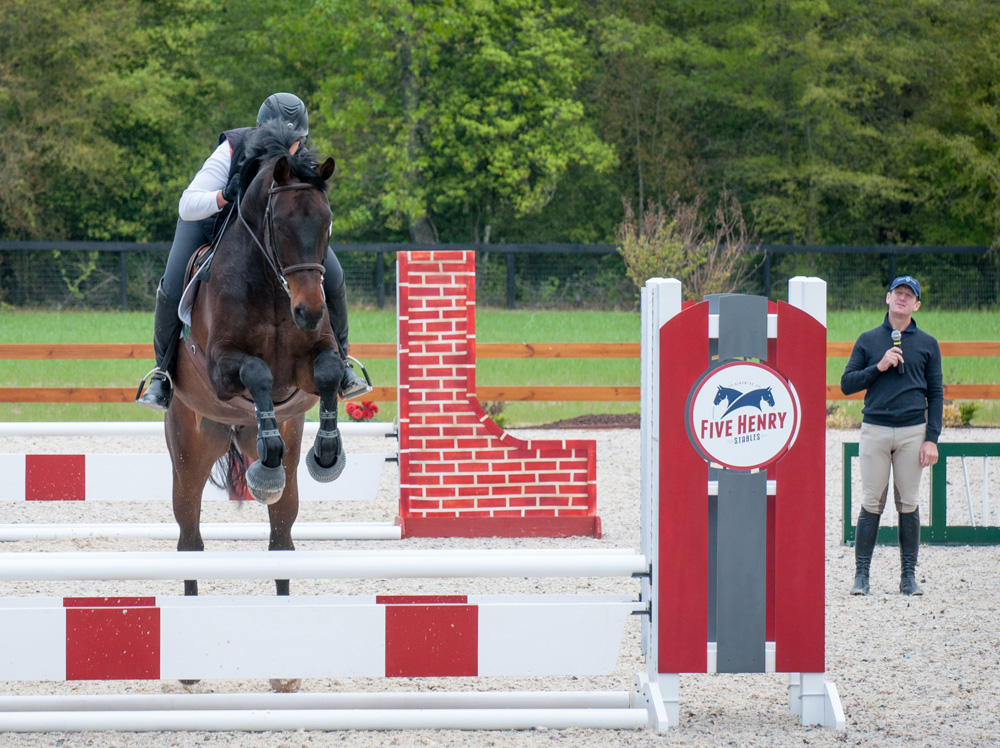
McLain Ward helped Juliana Zunde through some issues with her Maximillian. Photo by M Timmerman Photography
“This is a young horse with a lot of ability. But your horse isn’t spooky. He is cheeky, he is spoiled,” Ward said. Maximillian had run out to the left at a diagonal plank vertical that many of the horses had found intimidating.
“You don’t need to be tough or aggressive, you need to be disciplined and aware,” he told Juliana. “Don’t make excuses for him. You can talk yourself into every excuse in the book, especially when we care for the horse and spent a lifetime with him.”
Ward positioned himself and another ring assistant in front and to the sides of the jump, to “create a channel” for the horse. He suggested Juliana give Maximillian a mild tap on his left flank with her crop, then address the fence again. Maximillian jumped it.
“We didn’t abuse him. We didn’t allow him to evade. We stayed steady in our discipline. We asked the horse to just be respectful and we encouraged him. Then suddenly he is doing it,” Ward said as Juliana successfully cleared the course. “Good job, awesome.”
Don’t Stiff Your Horse
ADVERTISEMENT
Throughout the sessions, Ward constantly worked with the riders on improving their releases. He explained that a good release, whether crest or automatic, means having balance in your upper body and following the horse’s mouth.
“I am a child of the ‘80s; I started with a crest release. I have never practiced an automatic release. But in 90 percent of my pictures there is a mild automatic release. That has come naturally just by the philosophy of following the horse’s mouth,” he said.
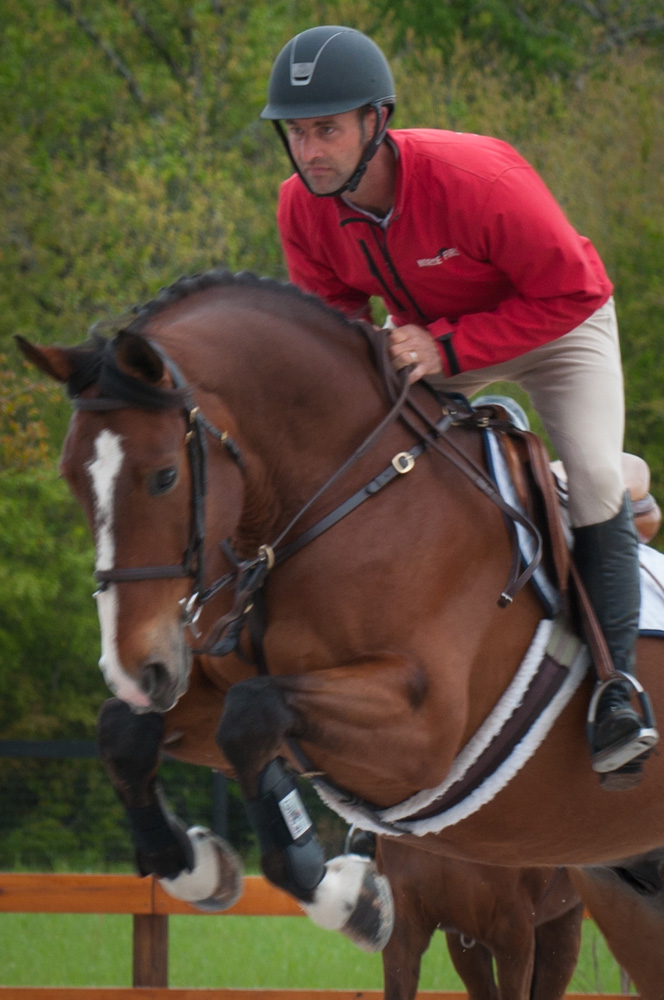
Five Henry Stables resident trainer Cameron MacLeod rode in the clinic with Shanghai. Photo by M Timmerman Photography
Ward has served as a judge of both the USEF Show Jumping Talent Search and ASPCA Maclay finals, and indicated that in that role, he considers that either release is OK, as long as it is done correctly.
“What I don’t like is the bad automatic release where the rider is stiffing the horse. It is being taught in equitation today. They have their hands lowered and they are hitting the bottom of the horse’s mouth. It is being taught by people who want kids to get ribbons in equitation classes,” Ward said.
“We do things in riding to make the horse go better, not just because it is popular right now,” he added.
Be Aware Of Your Habits
Pinched knees. Low hands. Bad posture. Weak heels. Every rider in the clinic had one or two bad habits, and Ward encouraged them to study up on the problem.
“These habits you all have, I bet you see that in your photos,” he said. “Go home at night, watch the video review, break it down, analyze it. Then come up with some solutions to fix the problems, and apply that to your riding the next day.” He added that if you are aware of your body, you have a better chance of correcting problems.
“My father used to take still photos, and I’d walk into the office and there would be four pictures he had marked up with magic marker. Circling where my leg should be in the picture. And this is when I was 30, not 13,” Ward said, laughing.
He added that even after many years of study, he still makes errors. “At this point in my career the advantage is that I am acutely aware. I am not perfect, but I can improve little mistakes and position errors much faster than most people because I am acutely aware of it.”
Not A Good Habit
“Don’t circle! Never circle!” Ward admonished one of the riders who pulled her horse out of an approach at the end of the day. To make the point, he shared a memorable story about when he and his wife first got together.
“There is an oxer in the middle of the ring at home. When it gets big, 4’9″ or 5′, it looks big sitting out there by itself.
“My wife came out of the corner the first time and circled. OK, once. Then the second time—a circle. That was kind of annoying me. So I said to her, ‘You making a mistake, I can live with,” he paused. “Circling is not going to be good for our marriage.”









